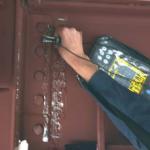Job description for an installer (sample). Job description for an installer Job description for an advertising agency installer
1. Goals
1.1.Work in a team of installers of PVC structures, perform your work with a high level of quality and on time.
1.2.Work for people who have a desire to live with the times; who know how to appreciate comfort, coziness and warmth. Offer to every client modern level service. Do everything to ensure that a person building his own house has the desire to trust the reputation of the company and order windows, doors and cabinets from the company for his home and office.
1.3.Strictly comply with labor protection requirements and safety regulations.
2. Requirements for the employee
2.1.An employee who is at least 18 years old and has completed a technical training course is allowed to work; To start working independently, you must have practical skills in installing PVC window structures.
2.2.The installer of PVC structures must know:
- mission, corporate standards, business plan of the company;
- organizational structure, Regulations on the administrative system;
- features of window production from PVC and aluminum profiles;
brands and types of PVC and aluminum window profiles; - installation technology;
- equipment and tools necessary for the work;
- rules and standards established by the company for the process of interaction with clients and partners.
2.3. An installer of PVC structures is hired and released from work by order of the director on the recommendation of the deputy director for production.
2.4. The installer of PVC structures reports on all issues to the installation foreman.
2.5. The work efficiency of an installer of PVC structures is assessed by the following indicators:
- fulfillment of all duties provided for in the job description without exception;
- constant improvement of the level of one’s qualifications;
- high level of official discipline;
- a friendly attitude towards all work processes, the ability to prevent conflicts;
- performing work with a high level of quality and on time;
- compliance with safety requirements.
2.6. The director of the company enters into an employment contract with the installer of PVC structures for a period of at least 1 (one) year. When concluding an employment contract, the director has the right to establish additional requirements for a candidate to work as an installer of PVC structures.
3. Job responsibilities
The installer of PVC structures must:
3.1.Come to work 10 minutes before the start of the working day, change into overalls, and prepare to go to the installation site.
3.2.Receive a daily shift assignment from the installation foreman.
3.3. Obtain from the warehouse the tools, components and materials necessary for the work.
3.4.Together with the team, perform loading and unloading work ready-made structures from PVC.
3.5. Having arrived at the installation site, carry out work in accordance with the instructions of the installation foreman and terms of reference for a specific order.
3.6. Upon completion of installation, together with the team, wait for the work to be handed over to the client and the consulting engineer to sign the transfer certificate. Eliminate all deficiencies identified during the transfer process as directed by the foreman and consulting engineer.
3.7. In all cases of relationships with clients, act technologically, observing the established standards for the relationship between the company’s employees and clients.
3.8. Prevent the emergence of conflict issues with the company’s clients, trying in all cases to satisfy the clients’ requirements and maintain their friendly attitude towards the company.
3.9. Observe safety precautions, rules against fire safety, industrial sanitation standards.
3.10.Treat the equipment with care; materials provided for work.
3.11. Treat the issued protective clothing with care.
3.12.Ensure quality of work and rhythm.
4. Rights
The installer of PVC structures has the right:
4.1.Perform only the work assigned by the foreman.
4.2.Submit proposals to improve the work of the team for consideration by the foreman and production deputy.
4.3. Suspend work on faulty equipment, when using raw materials and supplies of inadequate quality until the deficiencies are eliminated.
4.4. Require the foreman to provide assistance in the performance of his official duties and rights.
5. Responsibility
The installer of PVC structures is responsible for:
5.1.Violation of technological discipline.
5.2. Violation of safety and labor protection rules.
5.3. Failure to comply with installation standards.
5.4. Failure to comply with these instructions.
7. Working conditions
schedule:
weekend:
equipment provided for work.
We bring to your attention a typical example of a job description for an installer, sample 2020. Don’t forget, each installer’s instructions are handed out against a signature.
Typical information about the knowledge that an installer must have is provided. About duties, rights and responsibilities.
This material is part of the huge library of our website, which is updated daily.
Job description installer depends on the specifics of it labor activity. Typical sample This departmental document contains several sections - general provisions, duties, rights and responsibilities.
1. General Provisions
The instruction section establishes the employee’s position in the organization’s structure, the requirements for his education and professional qualifications:
The installer is a worker and reports to the head of the department, as well as the head of the organization;
He must have a secondary specialized education confirmed by a diploma;
The installer knows and is guided in his current activities by work safety rules. He knows the methods of installation operations, knows how to set up the appropriate equipment, use protective equipment and hand tools;
In daily work, the installer is based on the laws of Russia, internal regulations of the organization, and these instructions;
During his absence from work due to another vacation, temporary disability or for other reasons, his functions are performed by another employee of the same department, appointed by a separate order of management.
2. Job responsibilities of the installer
This instruction contains an exhaustive list of responsibilities this employee. It can be interpreted broadly:
Installs equipment and performs startup work;
Provides repairs to equipment necessary to perform his duties;
Performs installation of welded and other metal structures;
Starts and stops equipment. Before starting work, he is obliged to check the operability of the equipment, and after completion of work, he is obliged to check the condition of the equipment;
Carry out any types of installation actions on behalf of management within the limits of his competence and education;
Complies with safety requirements, undergoes introductory, primary and other established types of instruction;
Treats the organization's property with care, takes measures to prevent its breakdown or destruction;
Carrying out assembly and laying works, dismantling structures and structures;
Required to report to immediate superiors emergency situations, industrial injuries, equipment failure.
3. Installer rights
In order to ensure the interests of the employer and exercise the powers of this specialist, the installer is vested with the following rights:
The right to perform work safely and to be provided with personal protective equipment;
He has the right to receive reliable information about the risks associated with his performance of the relevant work;
The right to demand that management provide him with the necessary technical means and hand tools to solve assigned tasks;
Has the right to know about management decisions relating to his immediate activities;
Has the right to propose to the manager measures to improve the organization’s activities and increase labor efficiency.
4. Responsibility of the installer
The installer bears full responsibility for the work performed, its quality and timeliness. In case of damage to equipment or other property of the organization due to his fault, the installer bears financial liability within the limits established by the additional agreement.
In case of failure to perform or improper performance of duties, violation of rules labor discipline, the worker may be subject to disciplinary action.
Job description for an installer - sample 2020. Job responsibilities of the installer, rights of the installer, responsibility of the installer.
Russian Federation Sample documents and reporting forms
Production instructions for an installer for the installation of steel and reinforced concrete structures
set bookmark
set bookmark
Real production instructions for an installer for the installation of steel and reinforced concrete structures, developed on the basis of the Unified Tariff and Qualification Handbook (ETKS N 3), Construction Norms and Rules SNiP 12-03-2001 "Occupational Safety in Construction. Part 1. General Requirements", Interindustry Rules for Labor Protection when working at height POT R M-012-2000.
1. GENERAL REQUIREMENTS
1.1. An assembler for the installation of steel and reinforced concrete structures is a worker and reports directly to the foreman (site manager, foreman, head of another structural unit).
1.2. The installer for the installation of steel and reinforced concrete structures must perform his duties in accordance with the requirements of these Instructions.
1.3. A person with secondary education and appropriate training in the specialty is appointed to the position of assembler for the installation of steel and reinforced concrete structures.
1.4. An erector for the installation of steel and reinforced concrete structures must know:
main properties and grades of construction steels;
grades of concrete and types of prefabricated concrete, reinforced concrete and steel structures;
methods of assembly and installation of structures from individual elements;
methods for installing pipes from heat-resistant reinforced concrete blocks;
methods and techniques for installing reinforcing and armored mesh in reactors;
methods and techniques for assembling and installing rigging and lifting equipment and devices when installing medium-weight structures;
methods of slinging mounted structures;
methods of connections and fastenings of structural elements;
methods of scaffolding during installation of structures;
basic requirements for the quality of mounted structures;
device of construction and installation guns and rules of their operation;
device of pneumatic tools and rules for working with them;
methods and techniques for applying epoxy glue to reinforced concrete structures;
types of sealing gaskets for sealing joints and methods of gluing them.
1.5. An assembler for the installation of steel and reinforced concrete structures is appointed to the position and dismissed from the position by order of the head of the institution in accordance with the current legislation of the Russian Federation.
1.6. Persons at least 18 years of age who have passed a medical examination, theoretical and practical training, tested knowledge of labor safety requirements in the prescribed manner and have received permission to work independently are allowed to work as an assembler for the installation of steel and reinforced concrete structures.
1.7. The installer for the installation of steel and reinforced concrete structures is provided with special clothing and safety shoes in accordance with current standards.
1.8. An installer installing steel and reinforced concrete structures must know and strictly comply with the requirements for labor protection, fire safety, and industrial sanitation.
1.9. An erector for the installation of steel and reinforced concrete structures must:
comply with internal rules labor regulations and an established work and rest schedule;
perform work that is part of his duties or assigned by the administration, provided that he is trained in the rules for the safe performance of this work;
apply safe work practices;
be able to provide first aid to victims.
2. RESPONSIBILITIES
Before starting work, the assembler installing steel and reinforced concrete structures must:
2.1. Wear special clothing, safety shoes and a helmet of the established type.
2.2. Prepare the necessary personal protective equipment, including: a safety belt and a safety rope - when performing steeplejack work; safety glasses - when punching holes in reinforced concrete structures.
2.3. Check the availability and serviceability of technological equipment and tools.
2.4. Make sure that there are no defects in the elements of building structures intended for installation.
2.5. Check the lighting of the workplace.
2.6. During work, the installer installing steel and reinforced concrete structures is obliged to:
use personal protective equipment;
use a bag or hand box to carry and store the tool;
be on previously installed and securely fastened structures or scaffolding means;
for passage, use equipped access systems (stairs, gangways, bridges);
work on floors, coverings at a height of more than 1.3 m and at a distance of less than 2 m from the boundary of the difference in height should be carried out in the presence of fences; in the absence of fencing for workplaces at height, use safety belts complete with a safety device;
cleaning of building structure elements to be installed from dirt and ice before they are lifted;
observe the dimensions of their approach to previously installed structures and existing buildings and structures;
preliminary guidance of the structure to the installation site is carried out using guy ropes of hemp or nylon rope;
Before installing the structure, check that there are no people under the structures being mounted;
installers must install elements of building structures into the designed position without the use of significant physical effort;
secure the structure in accordance with the requirements of the project;
ensure stability and immobility of the mounted structure when exposed to installation and wind loads;
fastening should be done to previously fixed structures, ensuring the geometric immutability of the assembled building (structure);
unslinging of structural elements installed in the design position should be carried out after their permanent or temporary fastening in accordance with the design, subject to safety requirements;
When lifting structures with two cranes, slinging, lifting-feeding and installation of the structure in the design position should be carried out under the direct supervision of the person responsible for the safe performance of work on moving cargo by crane.
2.7. During the work process, an installer installing steel and reinforced concrete structures is prohibited from:
use suspended ladders and random scaffolding (barrels, boxes);
use damaged or faulty tools that have potholes, chipped working ends, sharp edges in places where the hand is clamped, bevels of the working surface, cracks;
crossing established elements and structures that do not have fences;
carry out work without using personal protective equipment;
carry out installation work in unlit places;
use lifting mechanisms to lift and lower people, work from loose structures and from scaffolds mounted on these structures;
connect adjacent sections of lifting scaffolds and cradles with each other using transitional decks (ladders);
performance installation work at an altitude of open places with a wind force of 6 points or more (wind speed 9.9-12.4 m/sec), as well as during icy conditions, heavy snowfall, rain and thunderstorms; when installing vertical blind panels, work stops when the wind force is 5 (wind speed 7.5-9.8 m/sec);
unloading of pipe elements by dropping;
moving structural elements by crane above the driver’s cabin of a car;
unloading and moving steel and reinforced concrete structures in case of faulty crane sound signal, lift height limiter, load limiter or other faults specified in the Design Rules and safe operation lifting mechanisms;
lifting structures covered with earth, frozen or embedded with other elements or loads without preliminary cleaning, as well as unspecified weight.
eat, smoke, have extraneous conversations.
2.8. At the end of the working day, an assembler installing steel and reinforced concrete structures must:
put the technological equipment in the designated storage area;
clear away waste building materials and mounted structures workplace and put it in order;
workwear and individual means protectors should be stored in the designated place.
3. RESPONSIBILITY
The steel and reinforced concrete structure erector is responsible for:
3.1. Timely and high-quality implementation of assigned duties.
3.2. Organization of their work, timely and qualified execution of orders, instructions and instructions from management, regulations on their activities.
3.3. Compliance with internal regulations, fire safety and traffic regulations of the Russian Federation.
3.4. Maintaining documentation required by current regulations.
3.5. Promptly taking measures, including timely informing management, to eliminate violations of safety regulations, fire safety and other rules that pose a threat to the activities of the institution, its employees and other persons.
3.6. For violation of labor discipline, legislative and regulatory acts, an installer installing steel and reinforced concrete structures may be subject to disciplinary, material, administrative and criminal liability in accordance with current legislation, depending on the severity of the offense.
4. RIGHTS
The erector for the installation of steel and reinforced concrete structures has the right:
4.1. Receive from enterprise employees the information necessary to carry out their activities.
4.2. enjoy information materials and regulatory documents necessary to perform their official duties.
4.3. Pass certification in the prescribed manner with the right to receive the appropriate qualification category.
4.4. Request and receive necessary materials and documents related to his activities and the activities of his subordinate employees.
4.5. Interact with other services of the enterprise on production and other issues included in its functional responsibilities.
4.6. Use all labor rights in accordance with the Labor Code of the Russian Federation.
5. FINAL PROVISIONS
5.1. An employee is familiarized with this instruction upon acceptance (transfer) to work in the profession for which the instruction has been developed.
5.2. The fact that the employee has familiarized himself with these instructions is confirmed by a signature on the familiarization sheet, which is an integral part of the instructions kept by the employer.
Developed by: |
|||||||
Head of structural unit: |
|||||||
(surname, initials) | (signature) | ||||||
Agreed: |
|||||||
Head (specialist) of the labor protection service: | |||||||
(initials, surname) | (signature) | ||||||
Agreed: |
|||||||
Head (legal consultant) of the legal service: |
|||||||
(initials, surname) | (signature) | ||||||
Agreed: |
|||||||
Head (specialist) of the HR service: |
|||||||
(initials, surname) | (signature) | ||||||
I have read the instructions: |
|||||||
(initials, surname) | (signature) | ||||||
Job responsibilities installer depend on what kind of equipment he has to install. Our sample job description for an installer is suitable for regulating an installer of material handling equipment.
Installer job description
(Job description for a lifting and transport equipment installer)
I APPROVED
CEO
Last name I.O. ________________
"________"_____________ ____ G.
1. General Provisions
1.1. The installer belongs to the category of workers.
1.2. The installer is appointed to the position and dismissed from it by order general director on the recommendation of the head of the structural unit.
1.3. The installer reports directly to the head of the structural unit.
1.4. A person who meets the following requirements is appointed to the position of installer: initial professional or secondary professional education, work experience in the relevant field for at least six months.
1.5. During the absence of the installer, his rights and obligations are transferred to another official, as announced in the organization order.
1.6. The installer must know:
- methods of installation of particularly complex equipment;
- methods of regulation and adjustment of equipment;
- rules for individual testing of equipment.
1.7. The installer is guided in his activities by:
- legislative acts of the Russian Federation;
- Charter of the organization, Internal Labor Regulations, other regulations of the company;
- orders and instructions from management;
- this job description.
2. Job responsibilities of the installer
The installer performs the following job responsibilities:
2.1. Carries out installation of metal structures of portals, bridges, towers, booms, supports and other load-bearing units of cranes.
2.2. Installs movement mechanisms for cranes operating on curved tracks.
2.3. Installs electric winches and hydraulic lifts.
2.4. Performs installation of rail grips.
2.5. Takes part in testing cranes.
2.6. Performs other work on the installation of lifting and transport equipment.
3. Installer rights
The installer has the right:
3.1. Require the administration to ensure labor protection, safety and fire safety rules.
3.2. Require the provision of protective clothing in accordance with current standards.
3.3. Submit proposals for improvement of work related to the responsibilities provided for in these instructions for consideration by management.
4. Responsibility of the installer
The installer is responsible:
4.1. For failure to perform and/or untimely, negligent performance of one’s official duties.
4.2. For failure to comply with current instructions, orders and regulations on maintaining trade secrets and confidential information.
4.3. For violation of internal labor regulations, labor discipline, safety and fire safety rules.
About the profession of an installer and his job description
Before talking about the job description for an installer, you need to decide what kind of profession it is. The fact is that the current ETKS (unified tariff and qualification reference book), which describes specific blue-collar professions, includes about 50 professions containing the word “installer” in their name.
What all these professions have in common is that in all cases we are talking about a person involved in assembling, installing, securing and connecting various structures and mechanisms. In this case, we can talk about power lines or pipelines, as well as agricultural equipment, so it is important that the features of each profession are enshrined in the corresponding job description.
There are no legal requirements for the design of an installer’s job description, but in practice it has turned out that it usually consists of the following parts:
Don't know your rights?
- General provisions. Here the name of the position (installer), level of qualification (indicating the rank according to classification directories), as well as subordination within the organization are indicated. If the work of an installer requires special knowledge or work experience, this is also enshrined in the general provisions.
- The duties that the installer performs by virtue of his position. Their exact list depends on what type of installation this worker is doing and what kind of organization he works for.
- Rights granted to the installer. It makes sense to list only those that are not included in labor legislation. An example is the right to contact management with statements and proposals.
- Scope of responsibility assigned to the installer. Here, too, each case is usually not listed, but only types of liability under the law are indicated (disciplinary, administrative, criminal, civil).
What are the job responsibilities of an installer?
Their exact list depends on what kind of structures or equipment this worker must install (for example, the job description of an installer working with reinforced concrete structures will be very different from the instructions of someone installing PVC products or electrical equipment), as well as from the qualification category that he has.
However, there are responsibilities that are common to all cases:
- installation of structures;
- installation of auxiliary mechanisms used during installation;
- participation in testing of assembled structures;
- compliance with the rules established by safety requirements when installing components, equipment, mechanisms or structures.
Where can I get a sample instruction manual for the installer?
If you have installers working at your enterprise and you need to draw up job descriptions for them, it would be wise to use ready-made sample. You can find it on any HR or legal resource (there is a sample of this document on our website).
However, before using it, you need to make sure that the sample you find corresponds to exactly the profession for which the instructions are required. In addition, you should check the instructions found for compliance with the ETKS in terms of the scope of job responsibilities.





